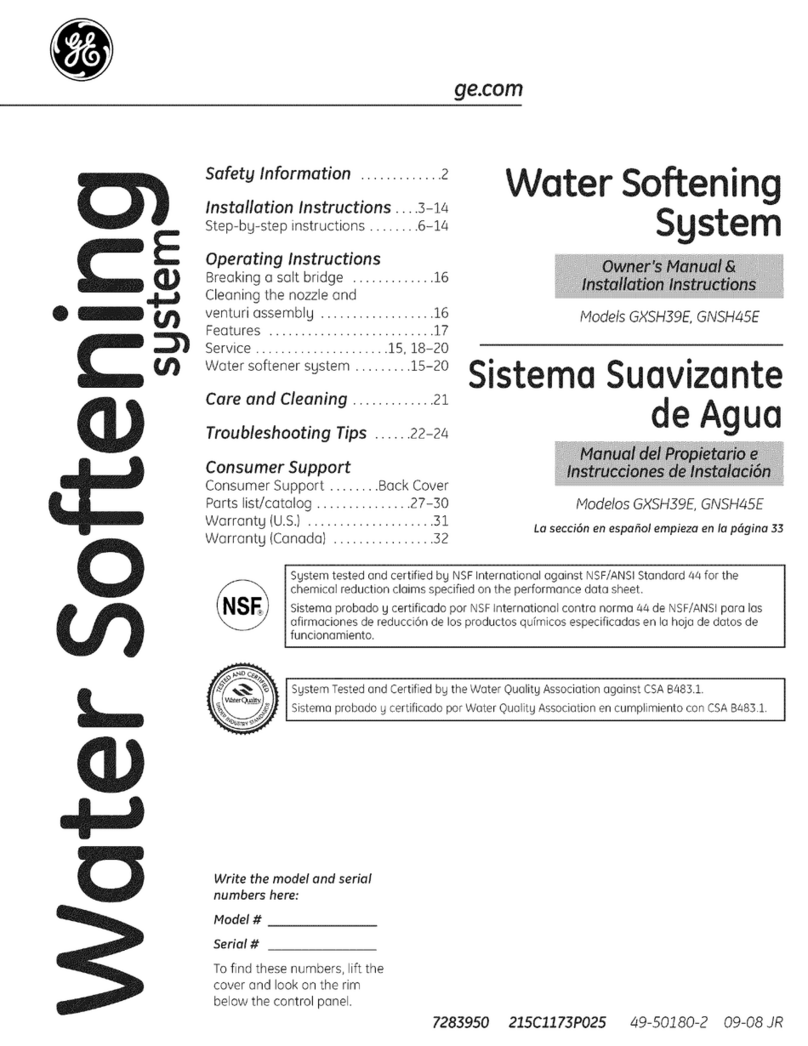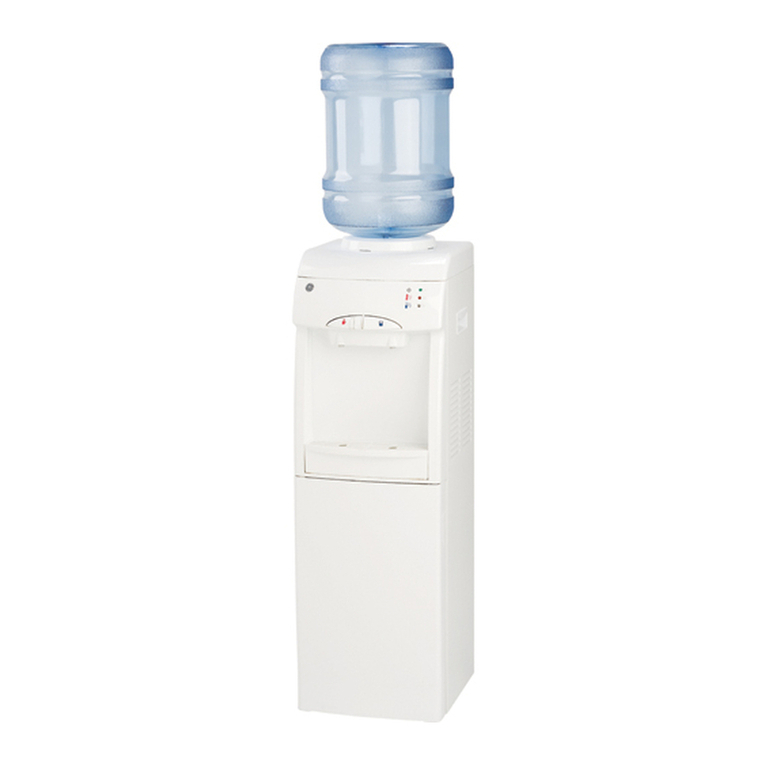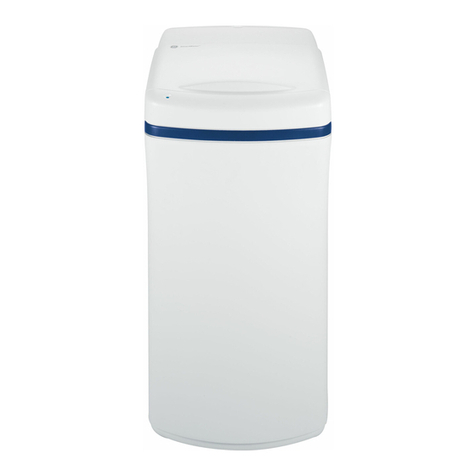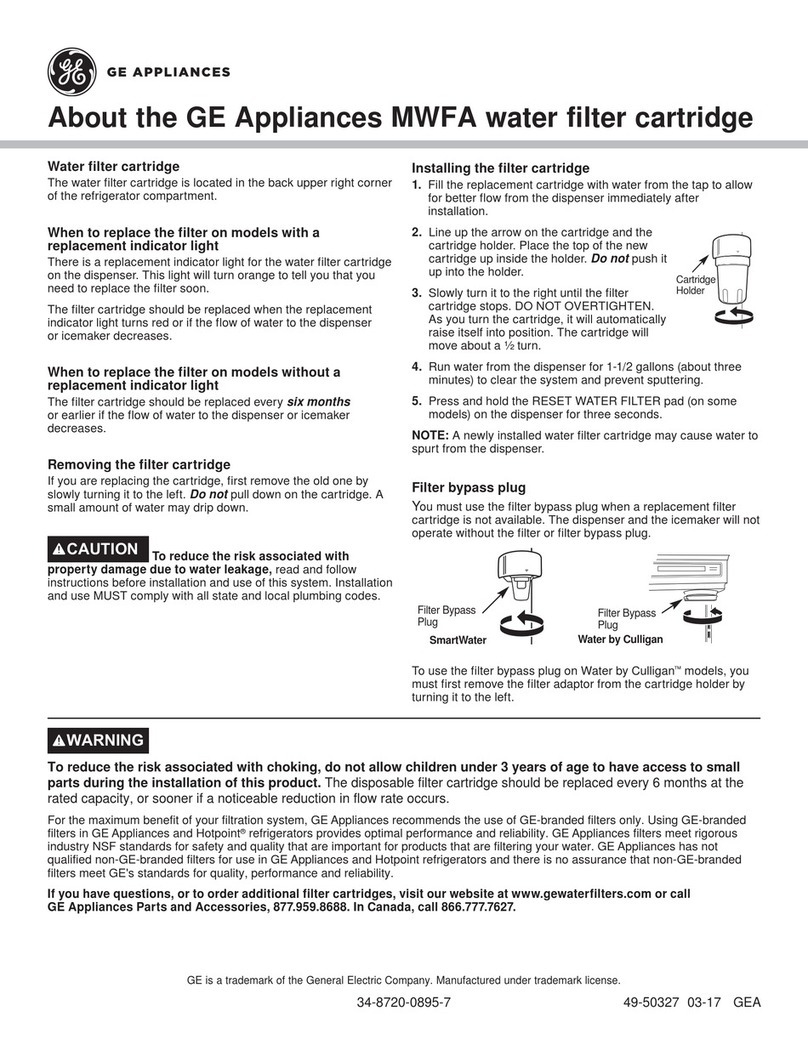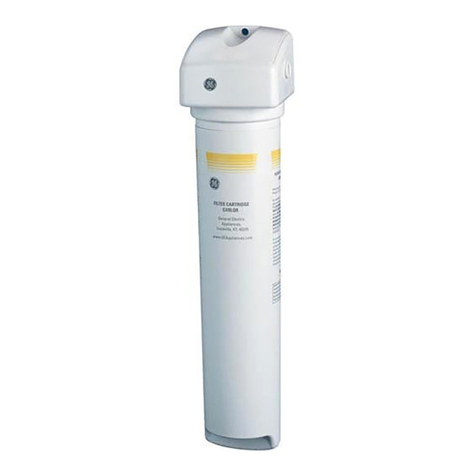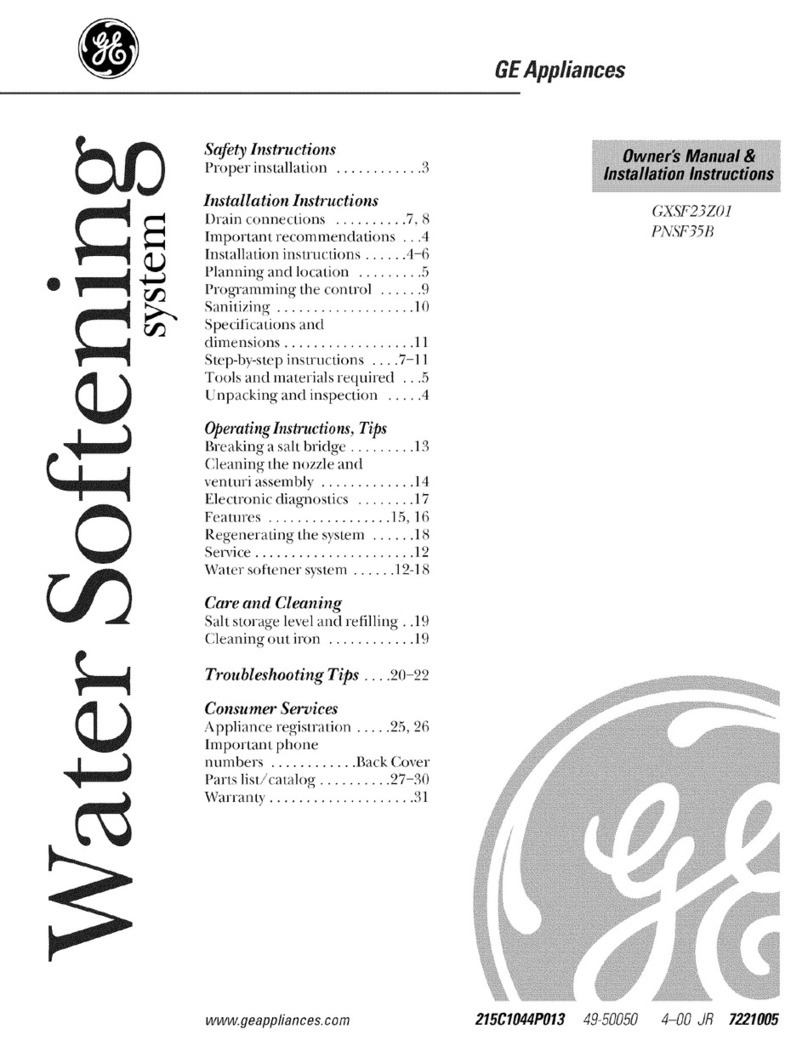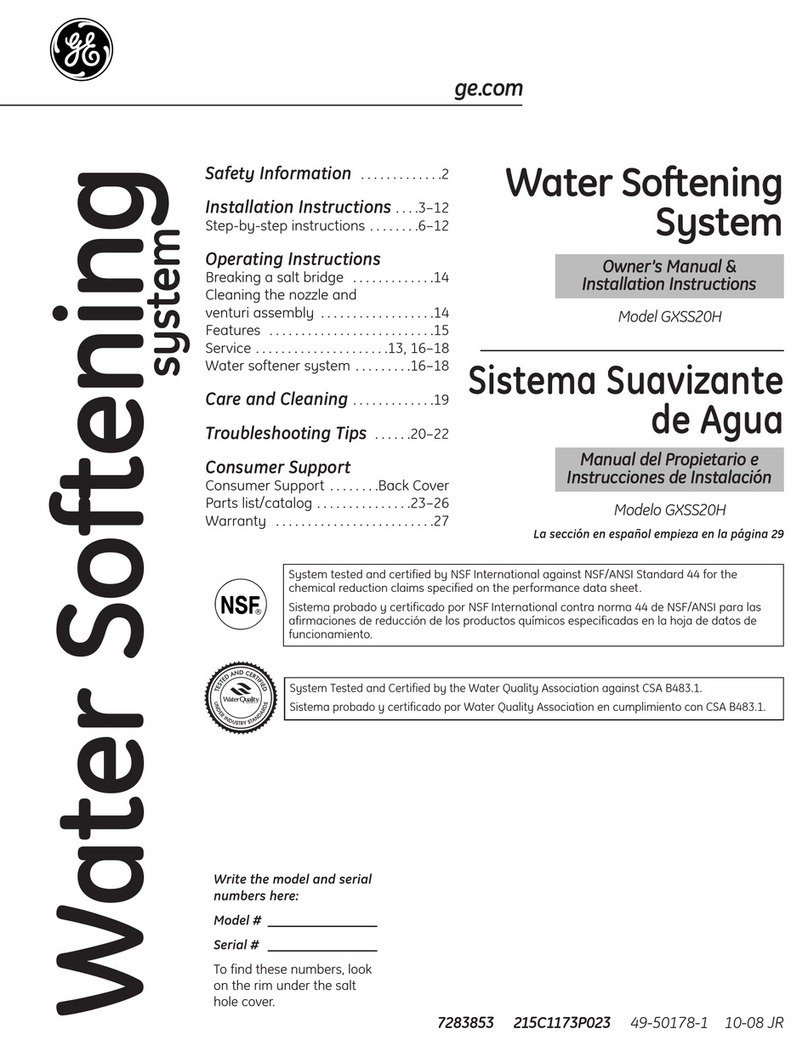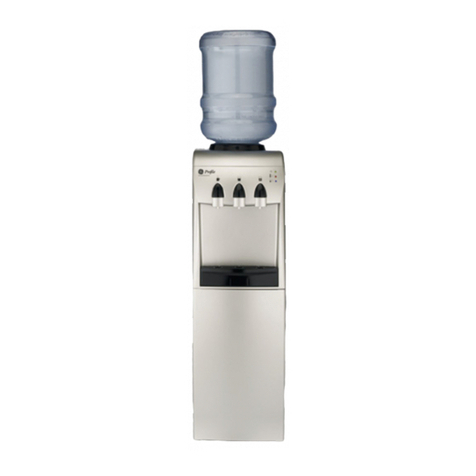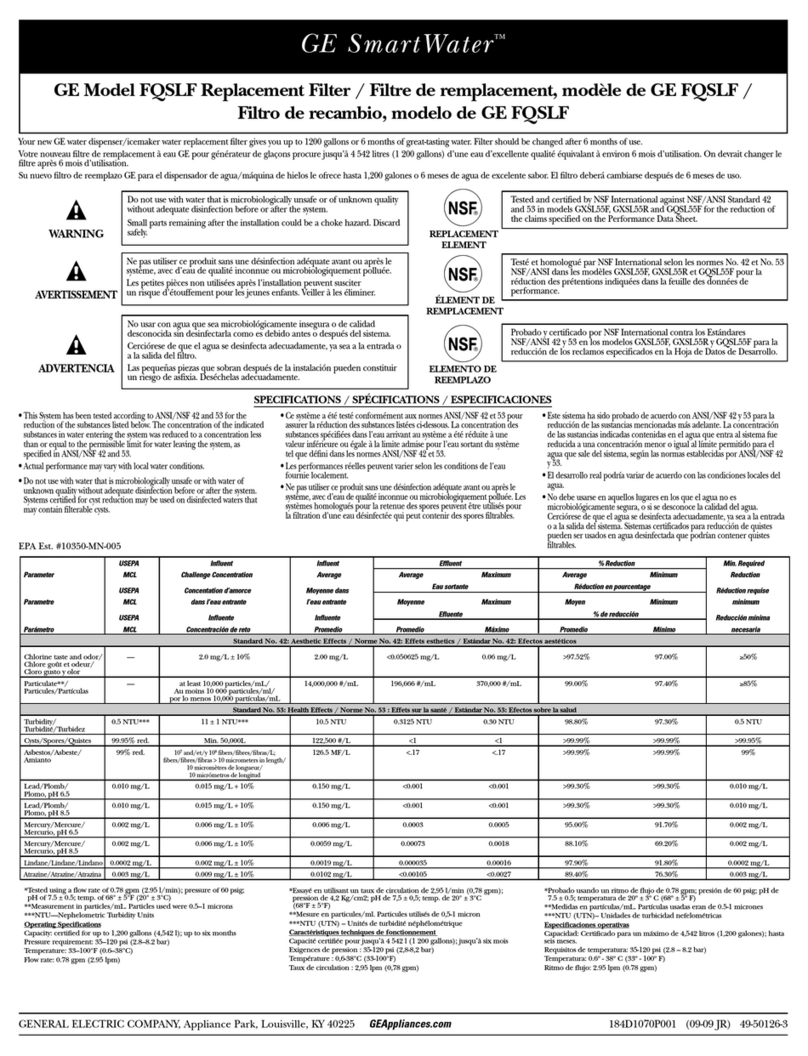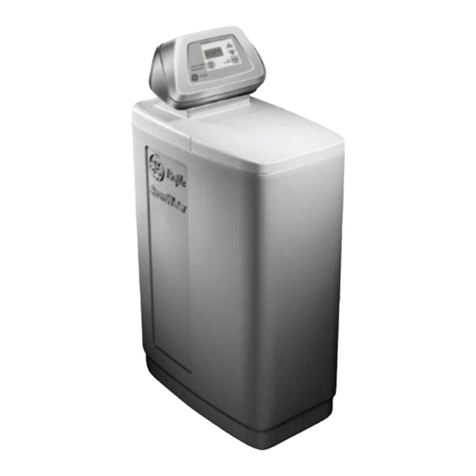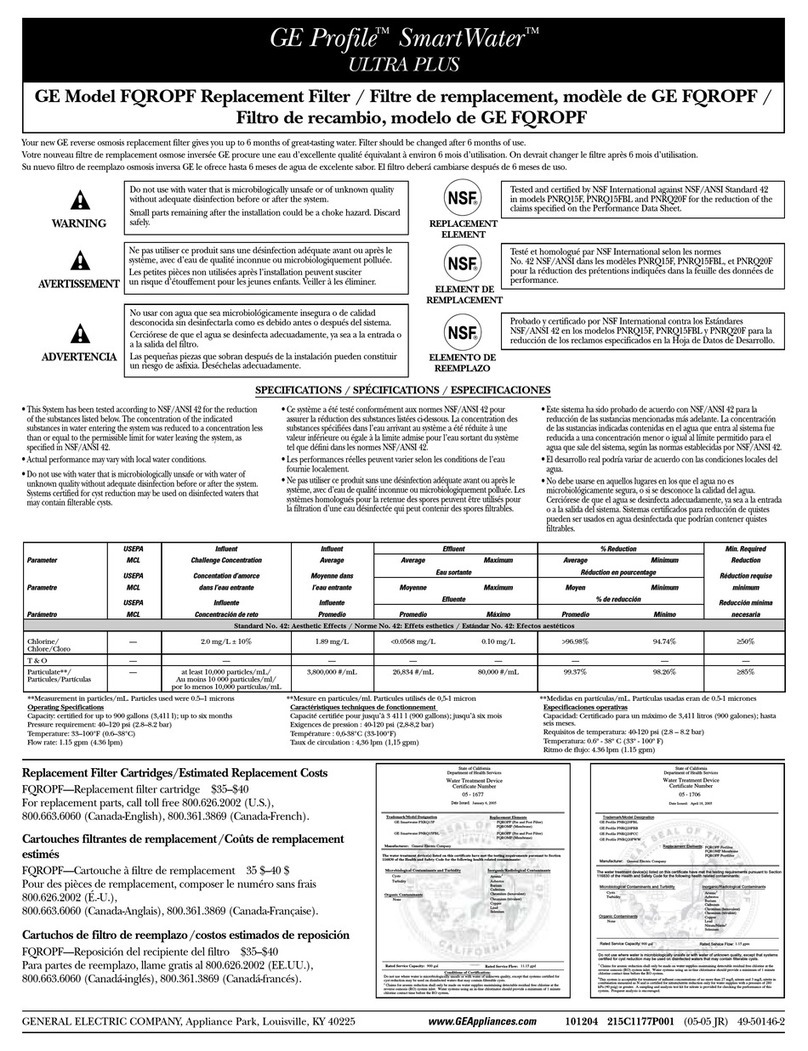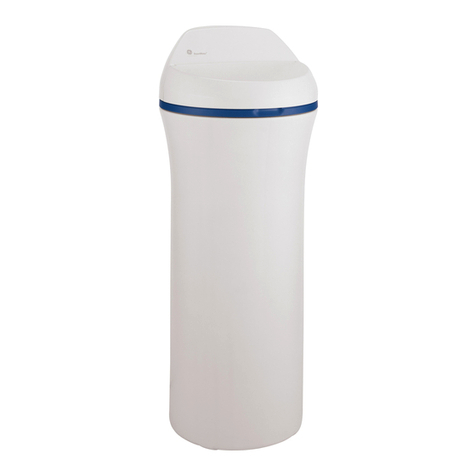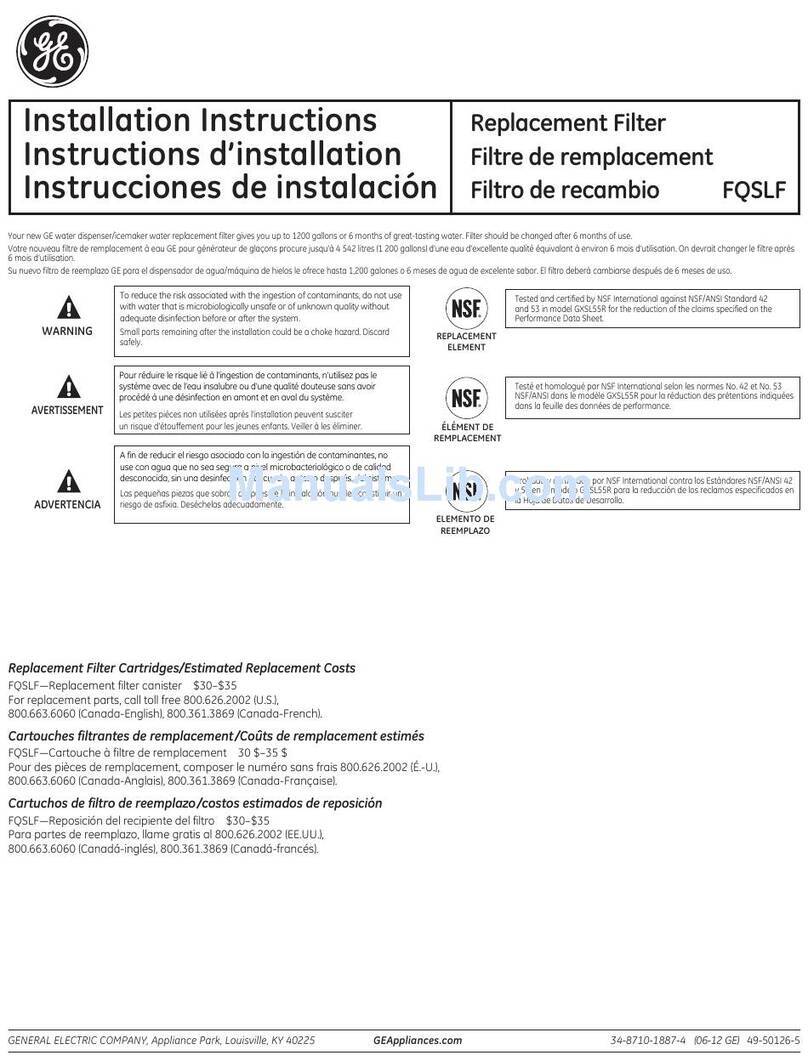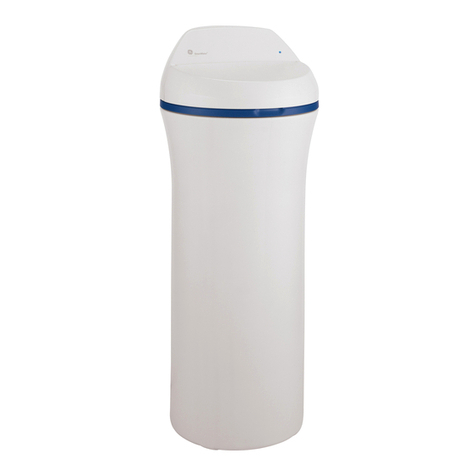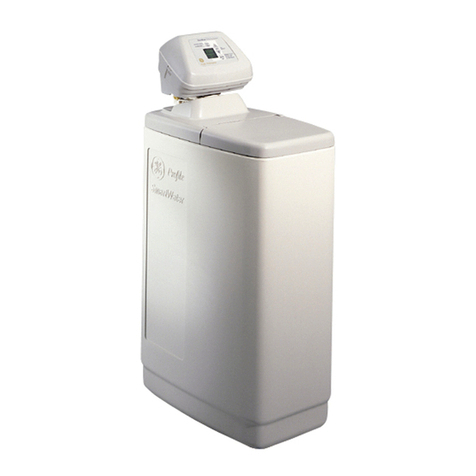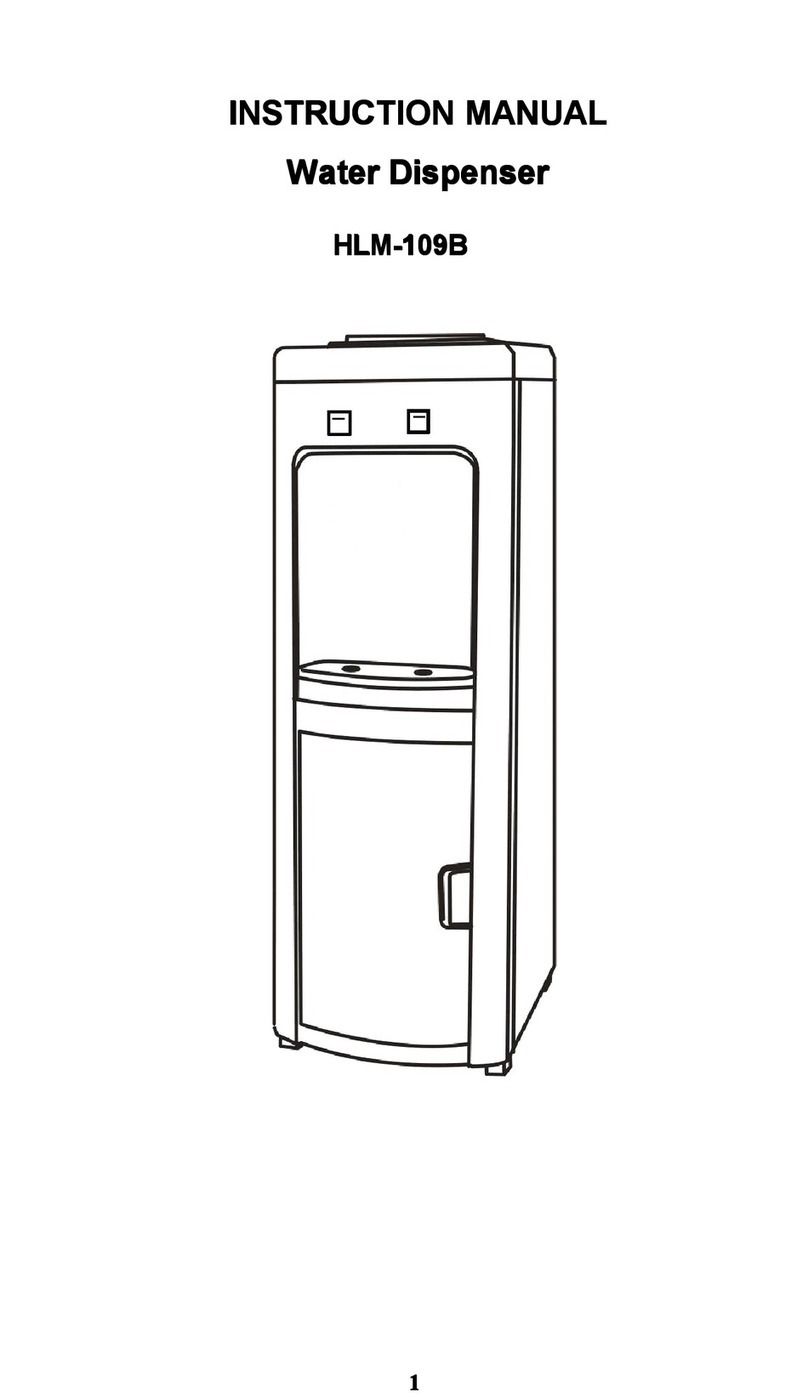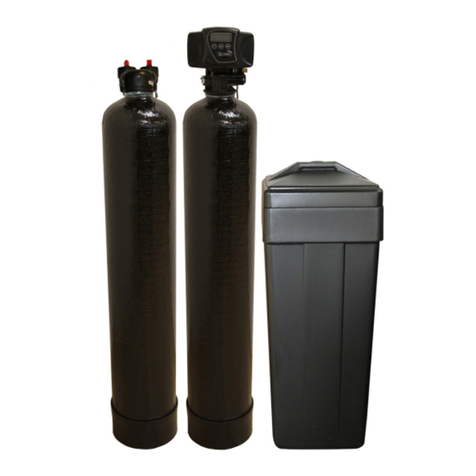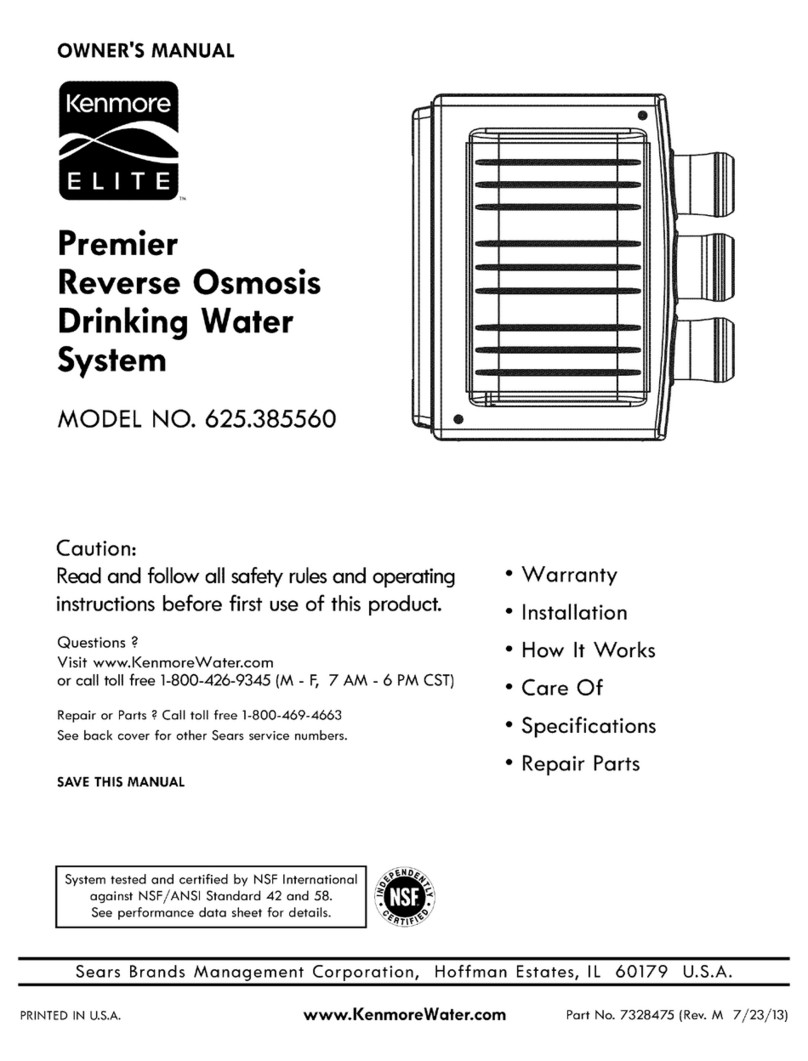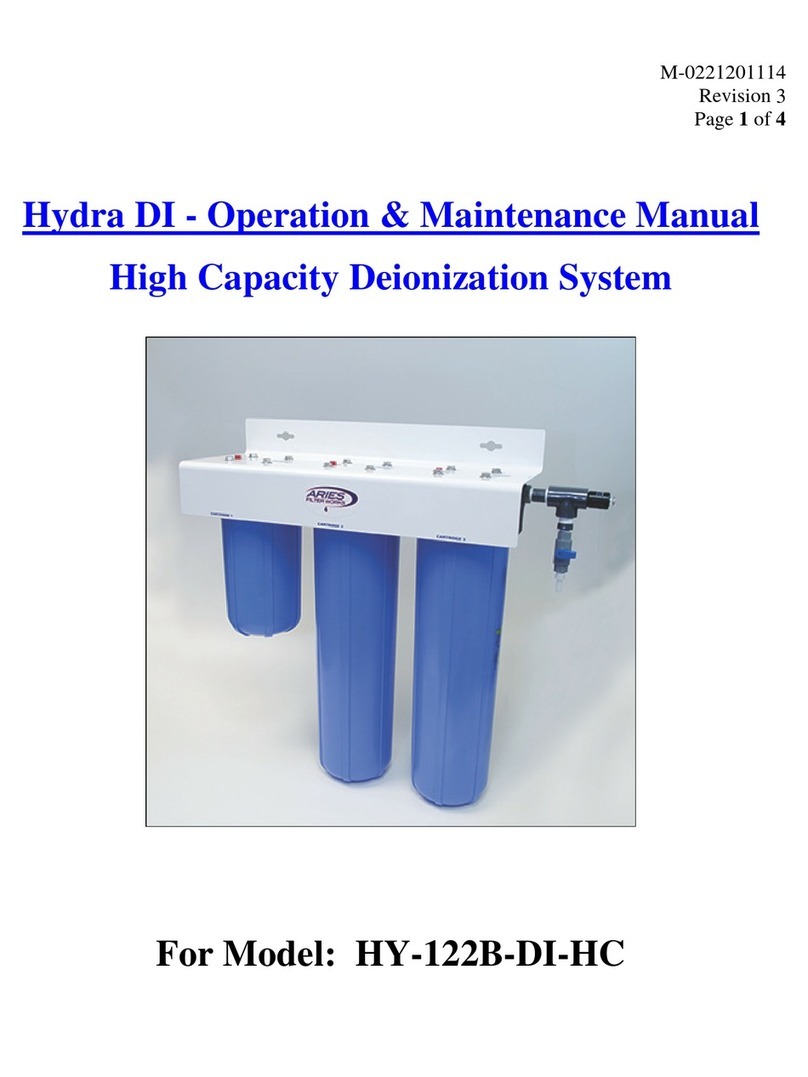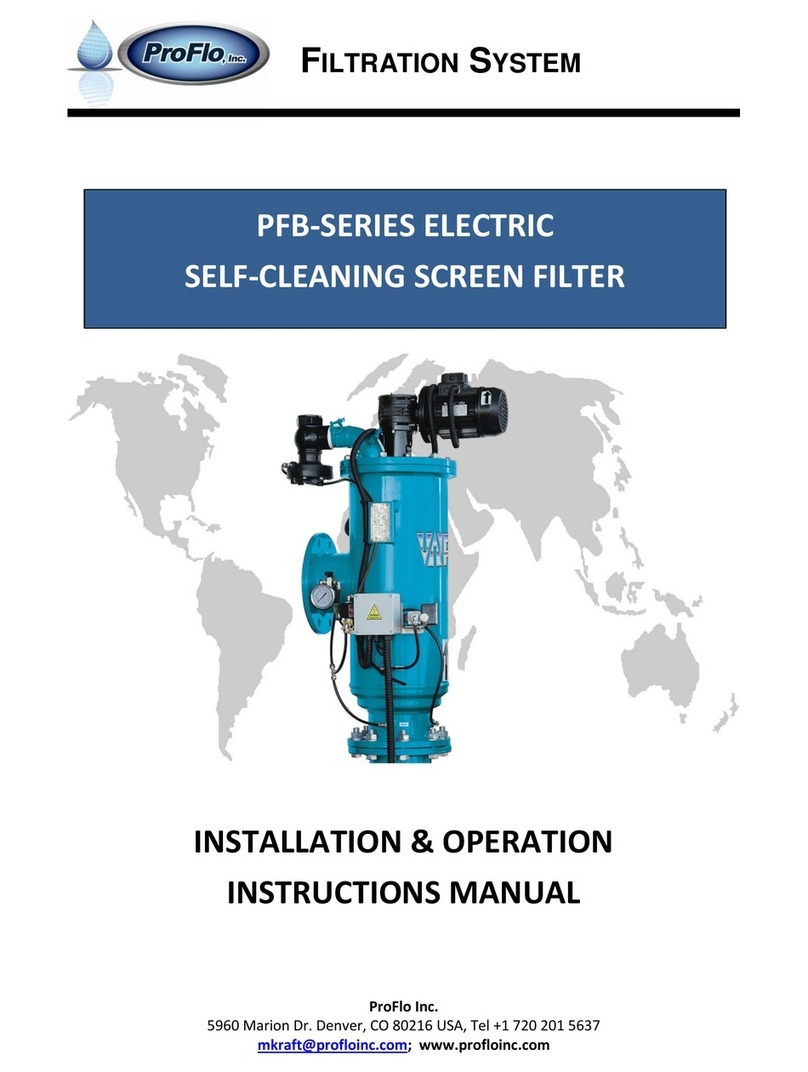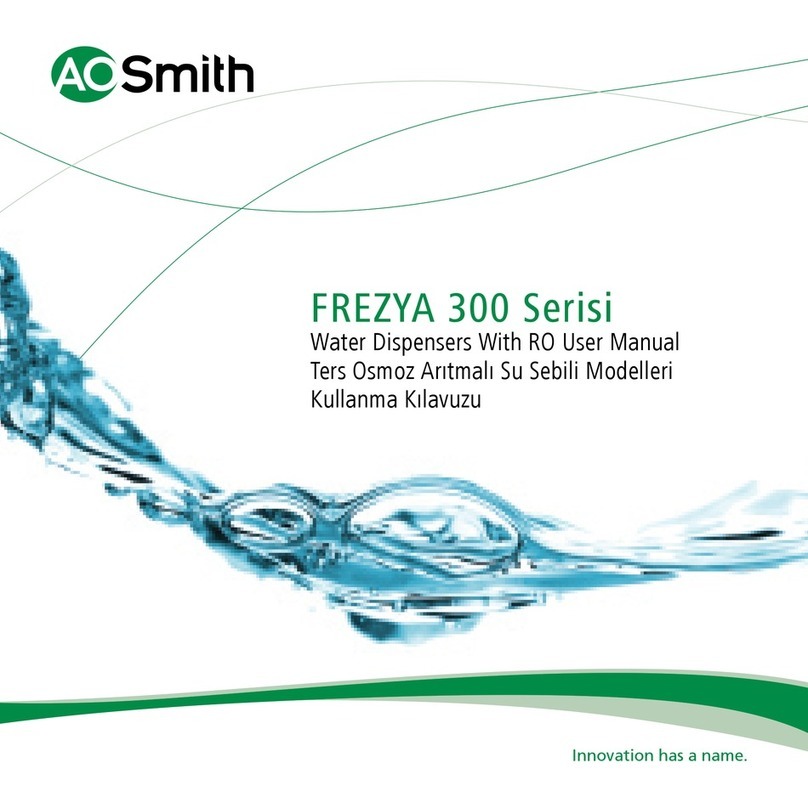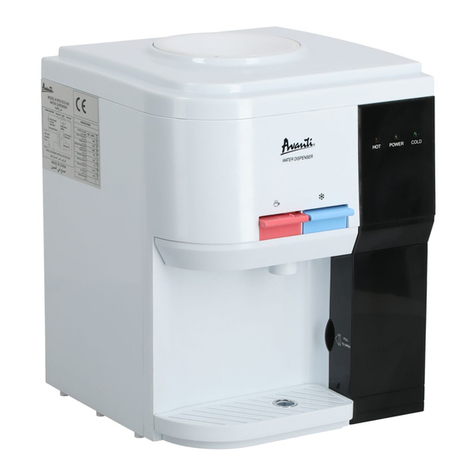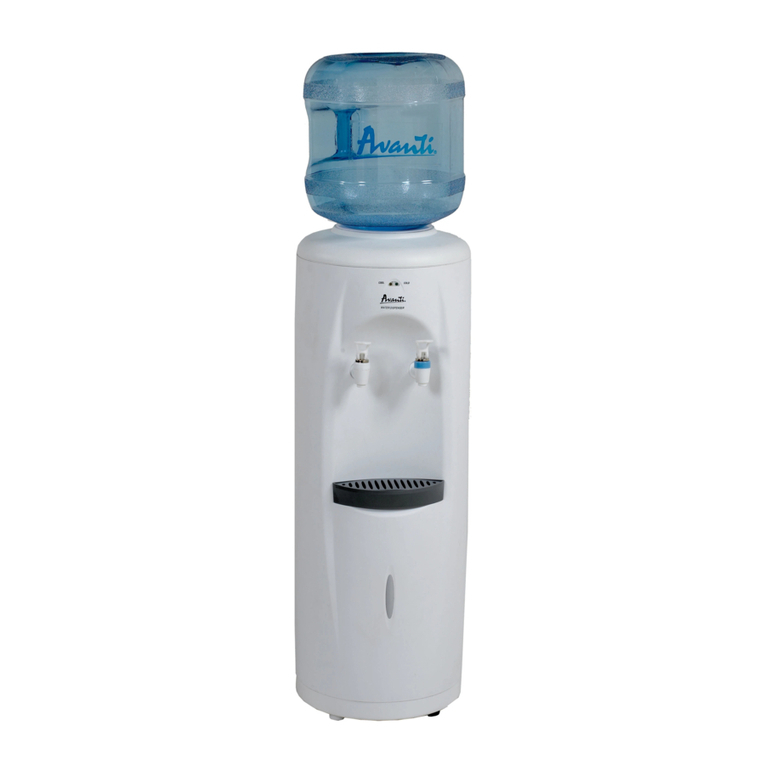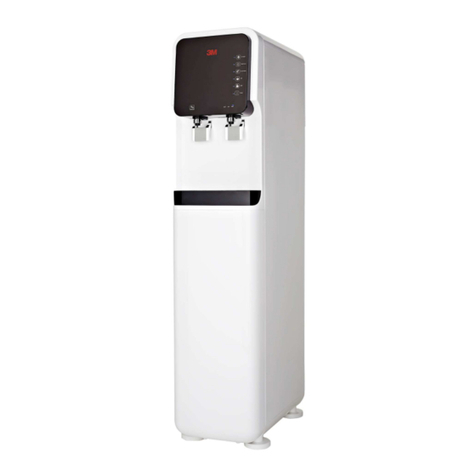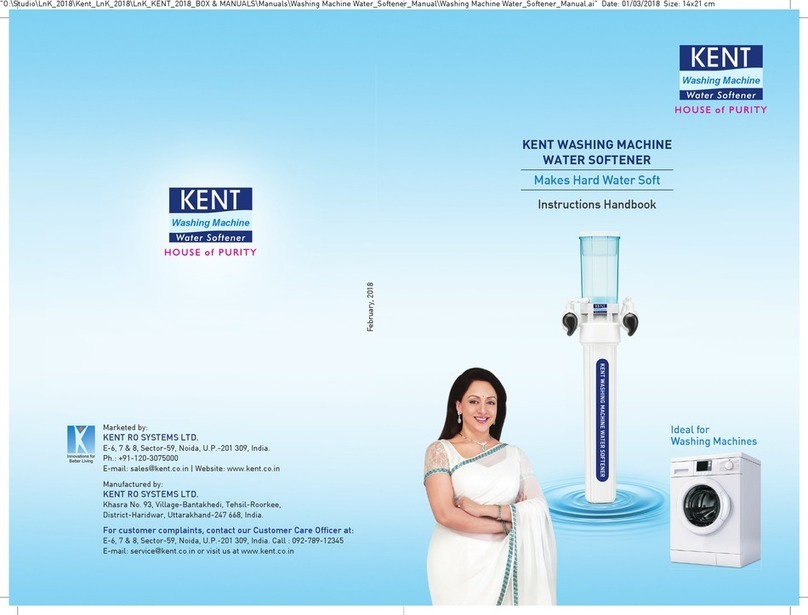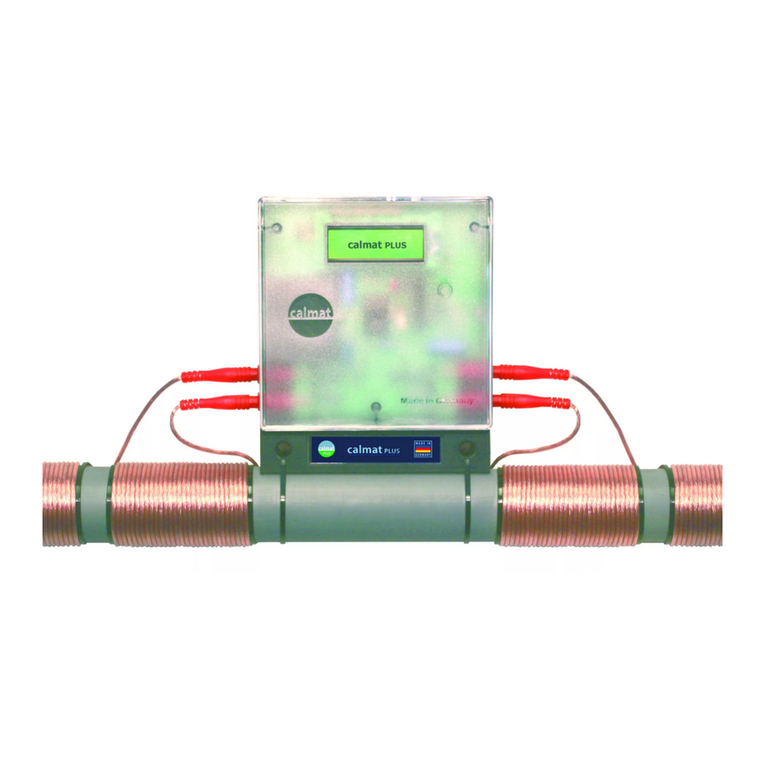9
Optional Control Settings
The controller display has several options and features.
LOW SALT ALARM
The LOW SALT ALARM, when enabled,
will sound the beeper when the DAYS
TO EMPTY value is 15 days or less. To
change this setting, press and hold
the MODE button for 3 seconds. ON
(factory default) or OFF will flash in
the display. Press the UP ▲or DOWN ▼buttons to toggle this feature
ON or OFF. Press the MODE button to accept, and the display will
move to SALT EFFICIENCY.
SALT EFFICIENCY
When the SALT EFFICIENCY feature
is ON, the unit will operate at a salt
efficiency of 4000 grains of hardness
removed per pound of salt (59fm3/
kg salt). This mode of operation
is the most efficient setting for salt
usage, because the system will tend to
recharge more often, with less salt usage. Turning the feature OFF will
tend to lengthen the time between recharge cycles, which will provide
the most efficient usage of water, but may use more salt. The degree of
difference between these two cycles is highly dependent on the water
usage and hardness at a particular installation.
To change the setting, press the UP ▲or DOWN ▼buttons to toggle
the feature ON or OFF. Press the MODE button to accept. The display
will move to SYSTEM/ELECTRONIC DIAGNOSTICS.
SYSTEM/ELECTRONIC DIAGNOSTICS
This display contains system diagnostics
information to assist in troubleshooting
problems with the system.
See page 15 for details. Press the MODE
button to return to the normal run
display.
LOST TIME SIGNAL
If time is lost on the display due to power interruption, the blue
indicator light will flash 4 times every second, until the present time of
day is entered.
LOW SALT SIGNAL
When the DAYS TO EMPTY drops to 15, the blue indicator light and
DAYS TO EMPTY in the display will flash every second and the alarm will
beep every 30 seconds (from 8:00 AM to 8:00 PM), to notify the user
that the unit is running low on salt. As soon as any button is pressed,
the alarm will stop beeping. The blue indicator light and DAYS TO
EMPTY will continue to flash. Once salt is added to the brine tank and
the SALT LEVEL is reset, the DAYS TO EMPTY wil l
be reset.
ERROR SIGNALS
If there is an error code detected, the
blue indicator light will flash 4 times
every second, the display will flash
Err, and the alarm will beep every 30
seconds (from 8:00 AM to 8:00 PM),
to signal that the softener requires
service. The alarm can be turned off by pressing any button, but the
blue indicator light and display will continue to flash.
See page 14 for information to assist in troubleshooting error codes.
Once the problem is corrected, disconnect the transformer from the
wall outlet momentarily, and plug it back in. The normal display will
appear. The motor may run for several minutes, as the unit resets.
If the problem is not corrected, the error code will reappear in 6
minutes.
BLUE INDICATOR LIGHT
Steady blue light indicates that the unit is working correctly. The light
flashes
when the unit needs attention from the user.
• Light flashes and DAYS TO EMPTY flashes—check salt level and add
salt as required.
• Light flashes and Err is in the display˜electrical problem
with system˜see page 16.
• Light will also flash when power to the unit has been
interrupted. Check the PRESENT TIME setting.
Programming the Control (cont.)
DAYS TO EMPTY
The words DAYS TO EMPTY and a number
are shown in the lower half of the display.
This information is shown in the normal
run display. This is to inform the user of
the number of days before the salt level in
the brine tank reaches Level 0. There will
be salt left in the salt tank, but it may not be sufficient to fully recharge
the system. Salt should be added at this time to avoid hard water. The
value is updated daily and whenever the SALT LEVEL value is changed.
NOTE: For the first several weeks of operation the DAYS TO EMPTY may
provide erratic operation. For example, the blue indicator light may
flash, showing that more salt is required when the actual salt level in
the tank is well above the Level 0. In some cases, the DAYS TO EMPTY
may even increase over a several week period.
It takes a couple of months for the water softener to learn your water
usage pattern. Once it does this, it will accurately determine actual
salt usage pattern. During this first period, check salt level when blue
indicator light flashes. If the salt level in the tank is at Level 1 or above,
allow system to run. Be sure to reset your salt level indicator each time
you add salt to the system.
